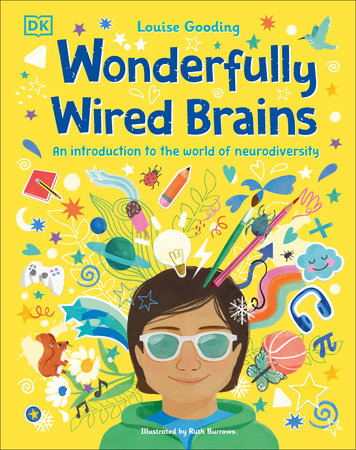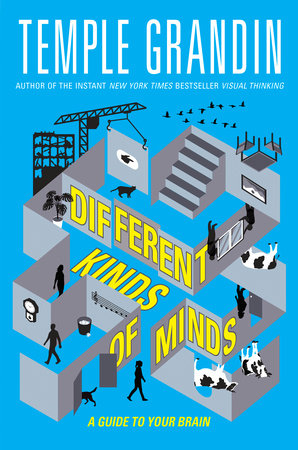
The STEM Tuesday Gods Smiled.
The STEM Tuesday gods must be smiling on me.
First, the monthly Writing Tips & Resources posting rotation bestowed upon me the good fortune of October’s “Spooky & Scary Science” and now January’s “Brain/Psychology” as my topics. How lucky is it that both topics land smack dab in the middle of my wheelhouse?
The second example is I’ve been borderline obsessed the past few years with studying and reading about brain science, especially how it relates to cognition and creativity. Brain/Psychology as my topic landed in fertile ground.
Several of my recent posts have documented this journey. My brain became hooked on brain studies in 2021 when I read and posted about a fascinating book by neuroscientist-turned-English professor Angus Fletcher called Wonderworks. In late 2022, I posted a piece called Creative Braining inspired by a fascinating Scientific American collection, Secrets of the Mind. The collection covers some of the latest developments in brain science and how they relate to cognition, processing, and recall.

The common thread of my brain journey has been studying how we interact with the world and constantly input/output information in such a way it gives each one of us a unique relationship to the environment. We call the expression of that unique relationship our personality. The magnet at the core of this is that, as creators, what is put into our brains gets processed differently in individual brains and results in unique output. This uniqueness of personality manifests in that often vague term “creative voice”.
That brings us to this month’s short and sweet STEM Tuesday Writing Tips & Resources tips. The focus is on experiencing more and better inputs to get more and better outputs. Improving our creator voice by expanding our experiences.
- Discover – Get out in the world and look for new things. Nature, museums, libraries, people-watching, walking, etc. are all great avenues for discovery.
- Adventure – Push yourself out of your comfort zone. Something new and possibly a little scary can lead to new brain-processing connections and result in new associations/ideas.
- Experience – Jump into the discoveries and adventures to get the visceral feel of something. It’s one thing to read or watch a video about a rollercoaster. Riding a rollercoaster, however, is on a whole other visceral level.
That’s it! Short and simple tips for maximizing your creator’s brain. Push information and experience into your brain and your brain will take care of the rest. The brain will take all those discoveries, all those adventures, and all those experiences, process the data, store it, and then form the neural connections to allow you to produce output unique to you.
Happy Braining!

Nikolakhs, CC BY-SA 3.0 <https://creativecommons.org/licenses/by-sa/3.0>, via Wikimedia Commons
 Mike Hays has worked hard from a young age to be a well-rounded individual. A well-rounded, equal-opportunity sports enthusiast, that is. If they keep a score, he’ll either watch it, play it, or coach it. A molecular microbiologist by day, middle-grade author, sports coach, and general good citizen by night, he blogs about sports/training-related topics at www.coachhays.com and writer stuff at www.mikehaysbooks.com. Two of his science essays, The Science of Jurassic Park and Zombie Microbiology 101, are included in the Putting the Science in Fiction collection from Writer’s Digest Books. He can be found roaming around the X under the guise of @coachhays64 and on Instagram at @mikehays64.
Mike Hays has worked hard from a young age to be a well-rounded individual. A well-rounded, equal-opportunity sports enthusiast, that is. If they keep a score, he’ll either watch it, play it, or coach it. A molecular microbiologist by day, middle-grade author, sports coach, and general good citizen by night, he blogs about sports/training-related topics at www.coachhays.com and writer stuff at www.mikehaysbooks.com. Two of his science essays, The Science of Jurassic Park and Zombie Microbiology 101, are included in the Putting the Science in Fiction collection from Writer’s Digest Books. He can be found roaming around the X under the guise of @coachhays64 and on Instagram at @mikehays64.
The O.O.L.F Files
This month’s version of the O.O.L.F.(Out of Left Field) Files looks under the hood at the brain and psychology.
The Creative Brain
- The Neuroscience of Creativity: A Q&A with Anna Abraham (Scientific American)
- The science behind creativity (American Psychological Association)
- The Creative Brain by Roger E. Beaty, Ph.D.
Brain Central
- Human Brain’s Unique Parallel Pathways (Neuroscience News)
- Understanding the speed of brain communication (Science Daily)
Prehistoric Creative Braining for Survival – We’ve been creative braining since the dawn of man.
- Scientists found a Stone Age megastructure submerged in the Baltic Sea (Ars Technica)
- The Blinkerwall!
- The oldest plans to scale of humanmade mega-structures (Plus One)
Psychology and Neuroscience
- Giving to others and neural processing during adolescence. (American Psychological Association PsychNet)
- Effects of Expressive Writing on Neural Processing During Learning (Frontiers in Human Neuroscience)

 The books I read for this month covered an interesting mix of brain science and psychology.
The books I read for this month covered an interesting mix of brain science and psychology.
















